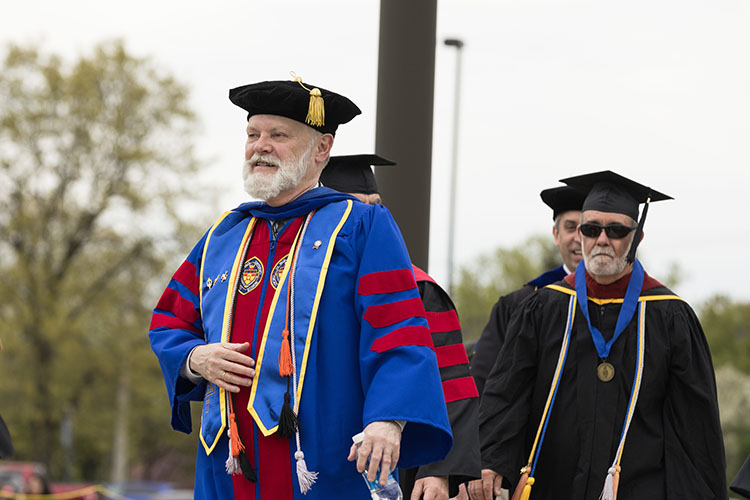History of Academic Regalia
In Medieval Europe nearly eight centuries ago, there arose a custom that both men and women of various ranks and categories of wealth – members of favored professions, trades, and guides – would wear distinctive robes and gowns of widely varying materials and colors, specified by royal decree.
Later, students at the Universities of Paris, Bologna, Oxford and Cambridge organized into groups (guilds) – Bachelor of Arts (apprentices), Masters (teachers) and Doctors (teachers who had completed past studies)–members of which wore distinctive costumes.

The hood, which became the most outstanding part of these costumes, developed as a functional attachment to the collar of an outer cloak generally worn over the gown. It could be pulled over the head from the back for warmth. It is now largely ornamental, attached to the front of the gown, draped over the shoulders and down the back, with distinctive color stripes denoting college, academic discipline, and degree.
The distinctive hoods represent the three degrees of academic achievement; however, in the United States the Bachelor’s hood is seldom used. Hoods are made of the same materials as the gowns but are lined in silk, representing the official colors of the institution granting the degree. The Purdue hood, which is lined in black, displays the old gold chevron and is trimmed in velvet of varying widths, three inches wide for Masters; five inches for Doctors. The velvet trim is generally coded to denote the field of study: white for a degree in Arts, gold-yellow for Science; blue for Philosophy; and so forth*.
Academic caps were a later development, first conferred as a symbol of the Master of Arts degree. Many styles were generated at different universities, but the stiff mortarboard style most frequently observed at ceremonies comes to us from Oxford University, the tassel being an elaboration of the original tuft. Gold cap tassels are reserved for Doctors and Presidents.
Using the Oxford style as a model, most academic costume usage in the United States has become standardized under the Intercollegiate Code of Academic Costume. The Bachelor’s gown has a closed front and long, pointed, open sleeves. The Master’s gown has a closed, oblong, pointed sleeve having a cross slit at the elbow for the arm, with the rear part of the oblong shape square cut and the front part having an arc cut-away.
The Doctor’s gown has velvet facing and its round, full bell-shaped, open sleeves have three velvet bars.
The Associate degree, a relatively recent development in the academic world, denotes the completion of a college degree program of less than four years. A gray gown is customarily worn to indicate that particular degree level. Only a few tentative efforts toward the development of a hood for this academic rank have been made, and they are seldom used.